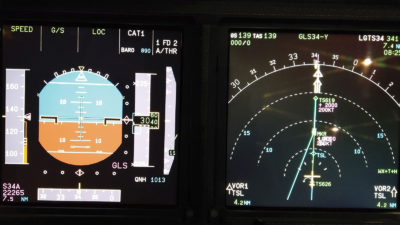Space logistics providers find their way
By Eric A. Jackson, Leif Anderson, Olivier L. de Weck and Robert Shishko|December 2016
The Space Logistics Technical Committee fosters development of integrated space logistics capabilities that enable safe, affordable and routine space-faring operations.
Space logistics in 2016 saw commercial providers truly come into their own, shipping vital supplies to the International Space Station and then returning essential scientific products as well as key station equipment that needed repair or assessment to Earth-bound operations.
Not only did the supply chain get “closed” through this renewed ability to launch and retrieve cargo, SpaceX achieved multiple recoveries of core launch transportation system components — first stages — from transits both to low Earth orbit and geosynchronous Earth orbit demonstrating a marked advancement toward reliable, lower-cost transportation both to orbit and, potentially, into interplanetary transits.
SpaceX accomplished this while responding to the challenges resulting from the loss of two launch vehicles, one in flight in 2015 and the other on the ground in September. These losses indicate that while the space transportation leg of space logistics is advancing rapidly, much work remains to achieve the reliability and responsiveness seen in the more mature aviation logistics enterprise.
Throughout 2016, the ISS program prepared for a busy manifest schedule delivering cargo and crew in the coming years. Installation of the Common Communications for Visiting Vehicles system and the first international docking adapter will support Orion and NASA commercial partners. Preparation has included a re-baseline of operating environmental control systems and additional crew quarters for planned increase of nominal crew size. Additionally, ISS continued upgrades to its Command and Data Handling System to support payload providers. NASA also added the requisite docking structures to enable future commercial cargo and manned transit to the ISS. On the ground, mission evaluation has transitioned to Mission Control Center for the 21st Century offering mission control flexibility through a more distributed architecture.
In the area of Mars research, researchers working on the NASA-sponsored “2016 Mars Water In-Situ Resource Utilization (ISRU) Planning Study,” announced and discussed an array of findings, including that four previously identified landing sites have a “realistic potential” to be considered as water reserves for human explorers. The findings were discussed in June at the 7th Space Resources Roundtable and the Planetary and Terrestrial Mining Sciences Symposium in Golden, Colorado. Also at the event, United Launch Alliance presented its “Cislunar 1000 Vision”—a 30-year road map in which lunar resources would enable a growing space economy. ISRU continues to be a major focus for space logistics researchers as a key enabler of human expansion into the Earth-moon-Mars system.
On the extra-orbital sustainment front, researchers at the Massachusetts Institute of Technology, NASA Jet Propulsion Laboratory and Keio University in Tokyo have analyzed the potential of lunar ISRU to develop a fuel infrastructure in cislunar space as a potential gateway for repeated human Mars missions and settlement later in the 21st century. It was found that up to 68 percent mass savings can be achieved on a recurring basis using lunar oxygen at a behind-the-moon fuel depot, assuming that the productivity of ISRU infrastructure can achieve levels of 10 kilograms a year for each kilogram of plant mass. This technology could become one of the pillars of a future interplanetary supply chain and has been referred to as a worthwhile “detour to the moon.”
Ultimately, the successes — and failures — experienced in 2016, combined with continued advancement in orbital, lunar and interplanetary logistics and supportability concepts, show convincingly that space logistics remains on a fast track. Continued work by commercial and government entities to standardize logistics procedures while developing improved tools and techniques for transportation, communication, packaging, handling and other vital logistics elements will ensure future space operations are able to be deployed, sustained and re-deployed cost effectively and efficiently. ★



































